

ACRIDIDAE: SHORT-HORNED GRASSHOPPERS
Diurnally active and frequently-encountered, this family contains the typical "grasshoppers". They are characterised by their short, stout antennae, short, stout ovipositor, presence of a tympanal organ on the first abdominal segment and 3-3-3 tarsal formula. The pronotum does not extend beyond the base of the wings. Globally there are between 8-10,000 described species in this extremely successful group. They are most diverse in grasslands, though some species are found in forested areas. The wings are generally well-developed but within any given species several forms with different wing lengths may occur. The hind femur are greatly thickened for jumping, allowing with crypticity, being their main defence against predators. The majority of species are vegetarian, though many will scavenge animal matter if plant food is scarce. Courtship may be elaborate and following mating the male may ride on the back of the female for over 24 hours, part of the mate guarding process to ensure that his sperm fertilise the females eggs. Clutches consist of 10-60 eggs laid into loose soil and any given female may lay 25 or more clutches over the course of several weeks.
Click on the images to enlarge them.
Designed by Paul Smith 2006.
This website is copyrighted by law. Material contained herewith may not be used without the prior written permission of FAUNA Paraguay.
Photographs on this page were taken by Paul Smith, Jeni Oborn, Alberto Esquivel, Moriz Stiefel, Chris Elder, Ivan Saxby and Laura Tensen and are used with their permission.
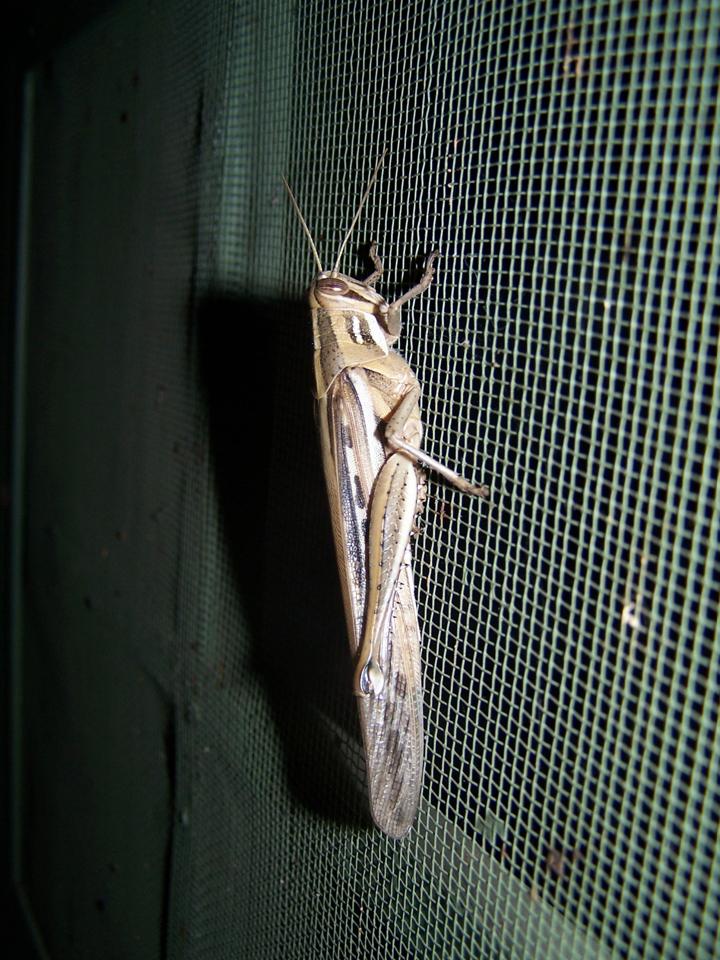
|
|
FIGURE 1a
|
|
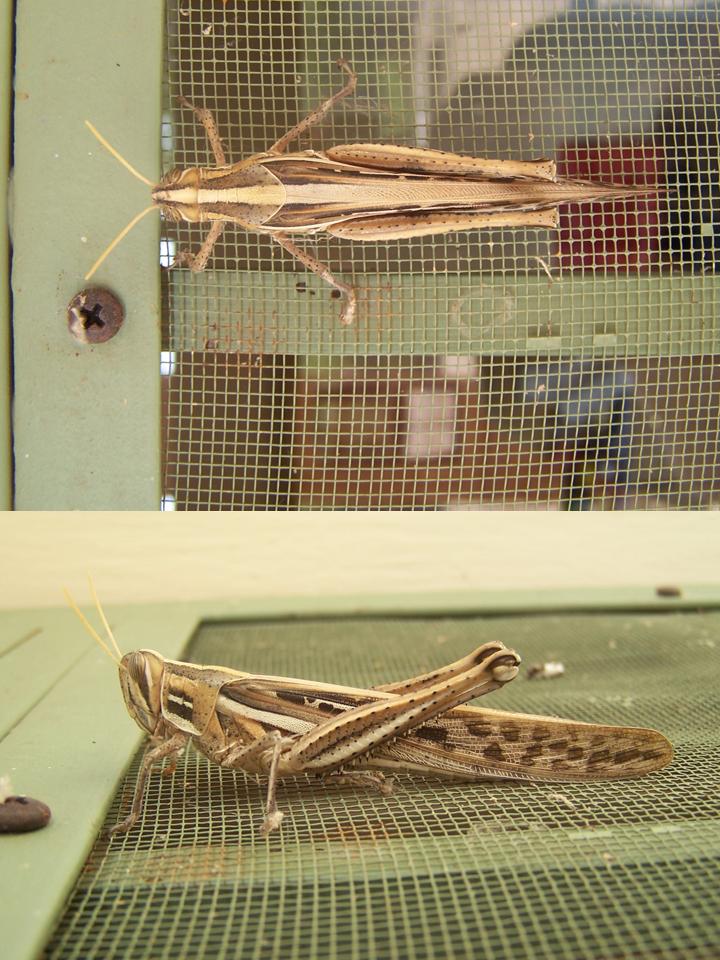
|
|
FIGURE 1b
|
|
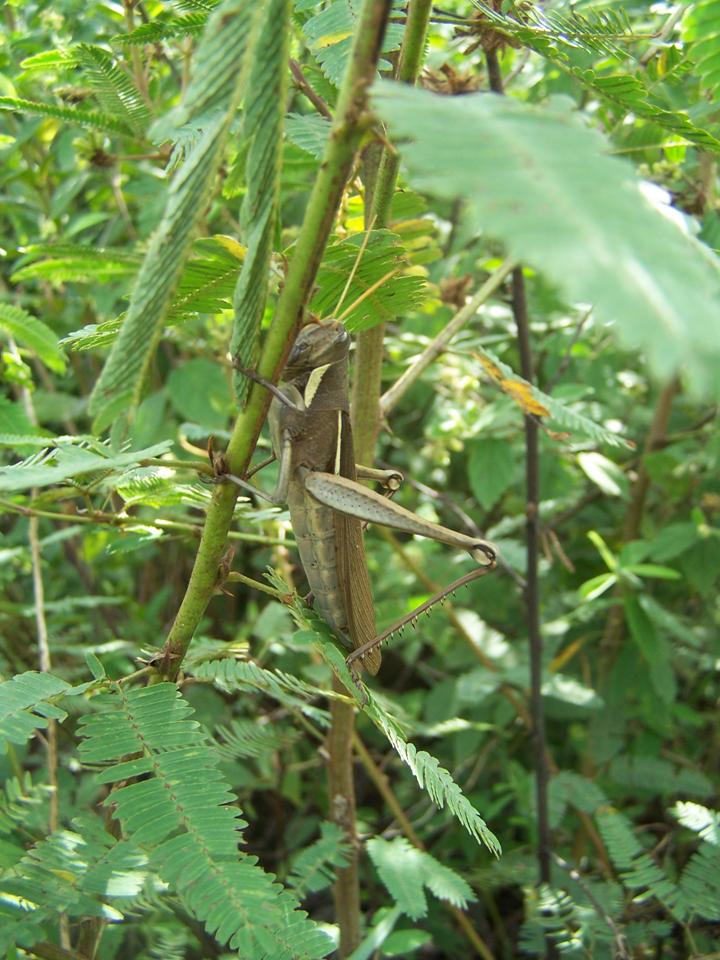
|
|
FIGURE 1c
|
|
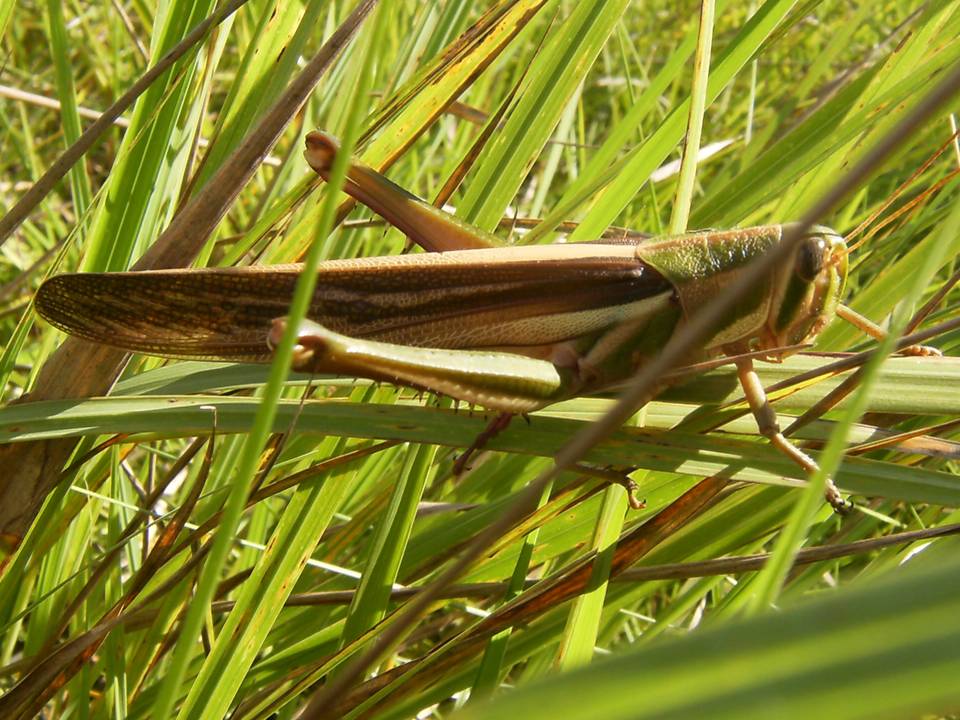
|
|
FIGURE 1d
|
|
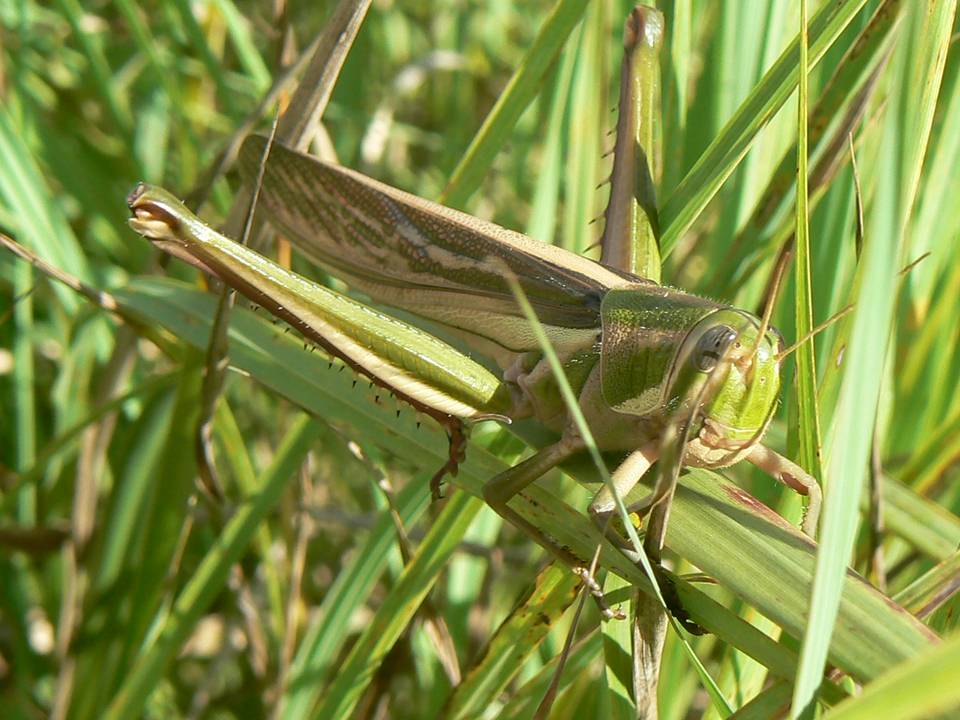
|
|
FIGURE 1e
|
|
Gallery 1: Cyrtacanthacridinae - Locusts
Members of this subfamily possess a spine between the forelegs which they share with the Romaleidae.
FIGURE 1a - Schistocerca cancellata - PN Tte Enciso, Departamento Boquerón (Paul Smith July 2006).
FIGURE 1b - Schistocerca cancellata. - PN Tte Enciso, Departamento Boquerón (Paul Smith July 2006).
FIGURE 1c - Schistocerca flavofasciata - Encarnación, Departamento Itapúa (Paul Smith April 2007).
FIGURE 1d - Unidentified sp. - Estancia Kanguery, PN San Rafael (Moriz Stiefel April 2008).
FIGURE 1e - Same individual (Laura Tensen April 2008).
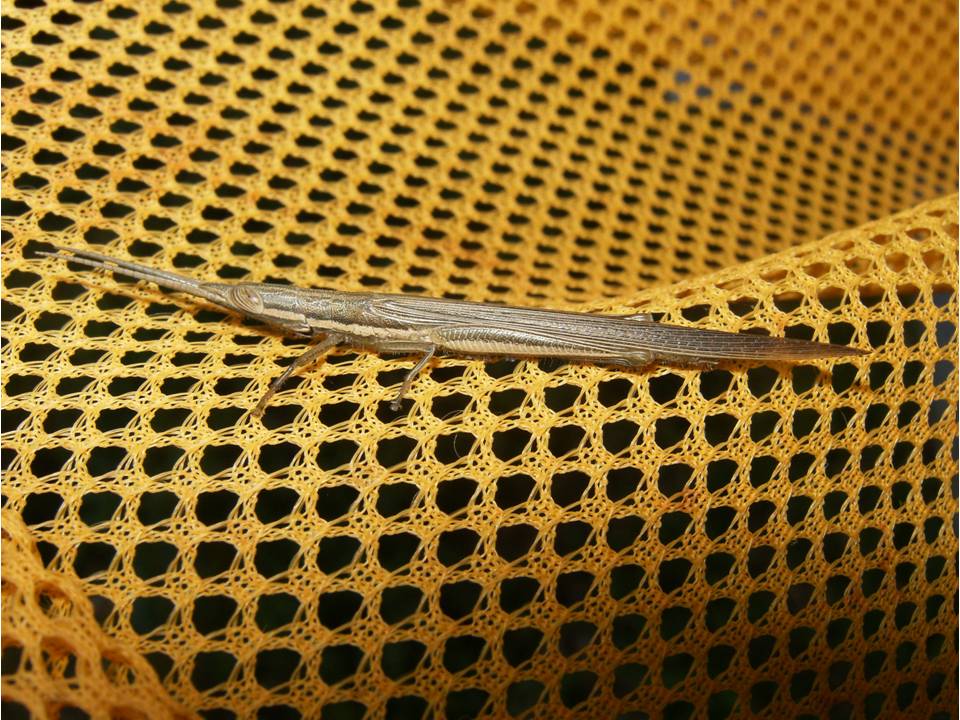
|
|
FIGURE 2a
|
|
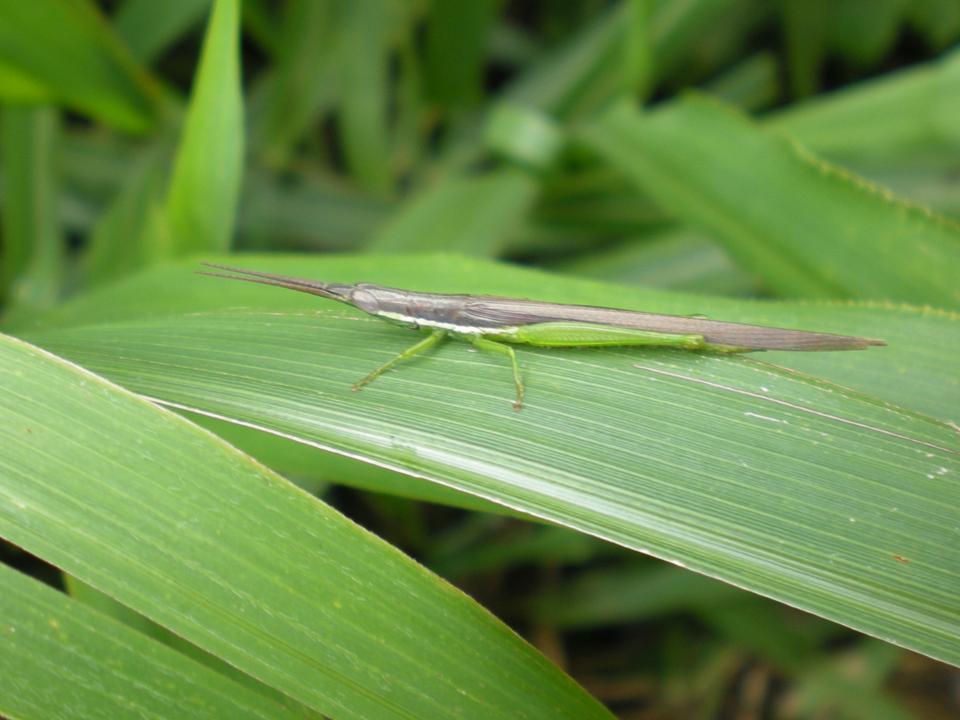
|
|
FIGURE 2b
|
|
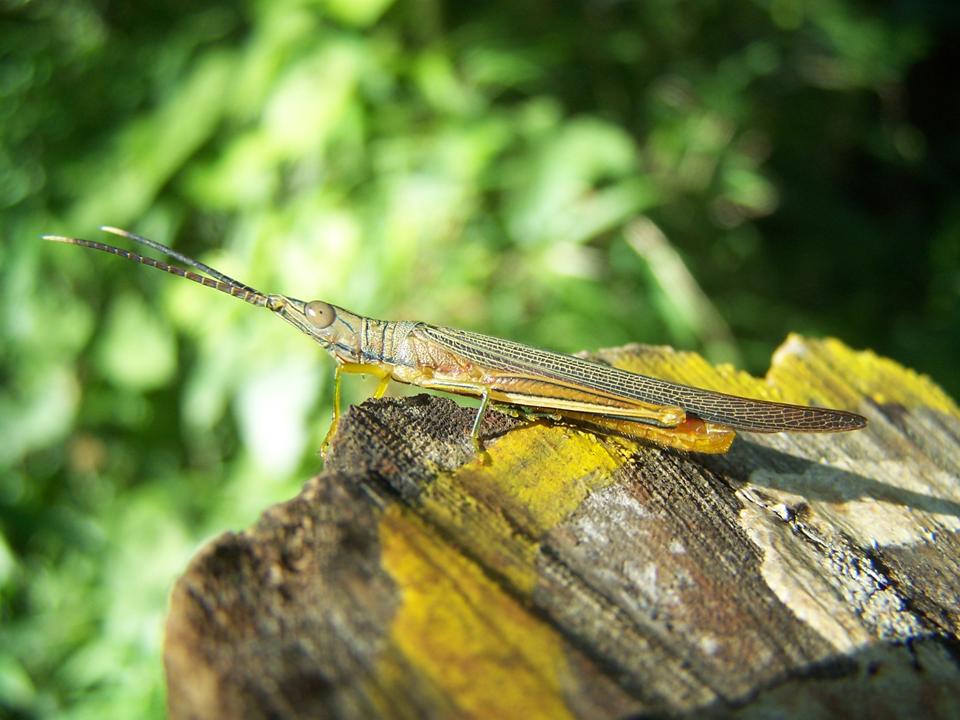
|
|
FIGURE 2c
|
|
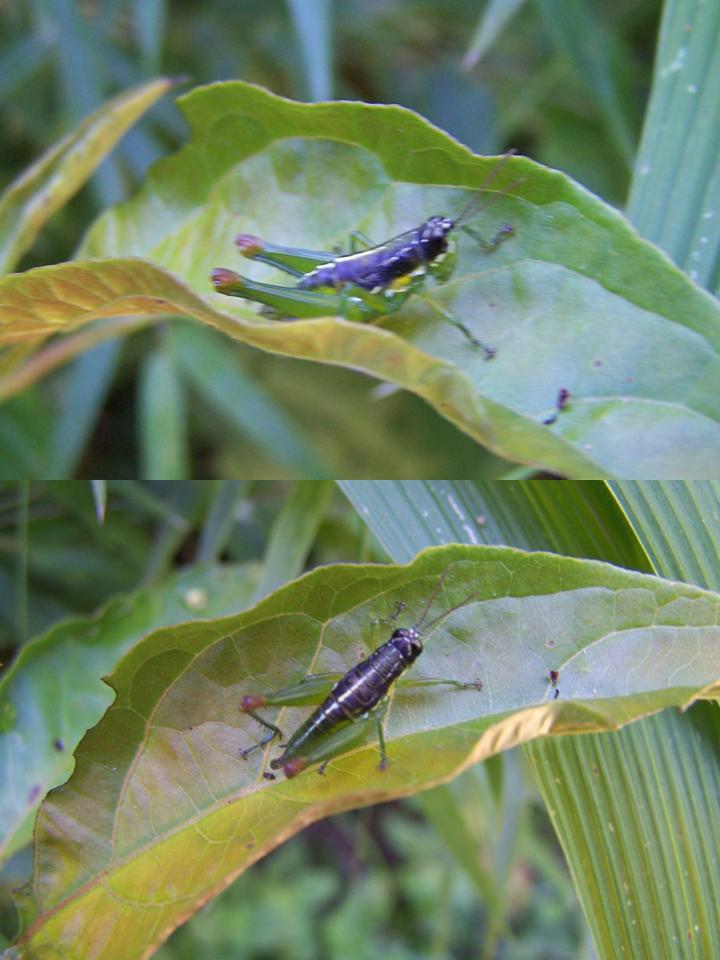
|
|
FIGURE 2d
|
|
Gallery 2: Leptysminae - Stick Locusts
FIGURE 2a - Cylindrotettis dubius possibly - PROCOSARA, PN San Rafael (Moriz Stiefel April 2008).
FIGURE 2b - Leptysma argentina possibly female - PROCOSARA, PN San Rafael (Chris Elder November 2007).
FIGURE 2c - Unidentified sp. - PROCOSARA, PN San Rafael (Paul Smith November 2007).
FIGURE 2d - Stenopola sp. possibly - PROCOSARA, PN San Rafael (Paul Smith November 2007).
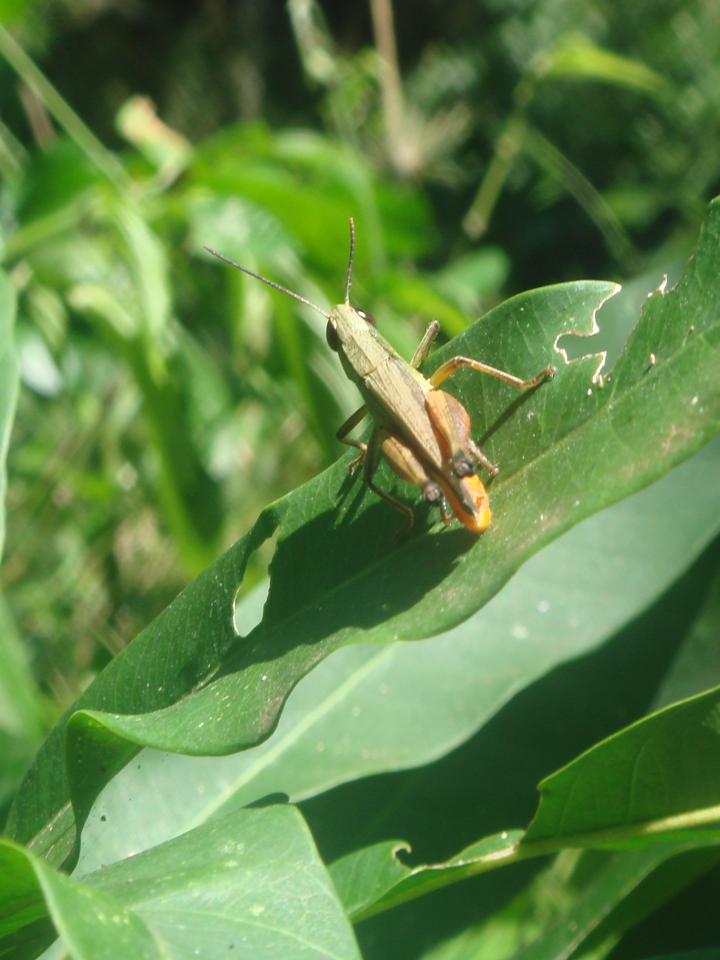
|
|
FIGURE 3a
|
|

|
|
FIGURE 3b
|
|
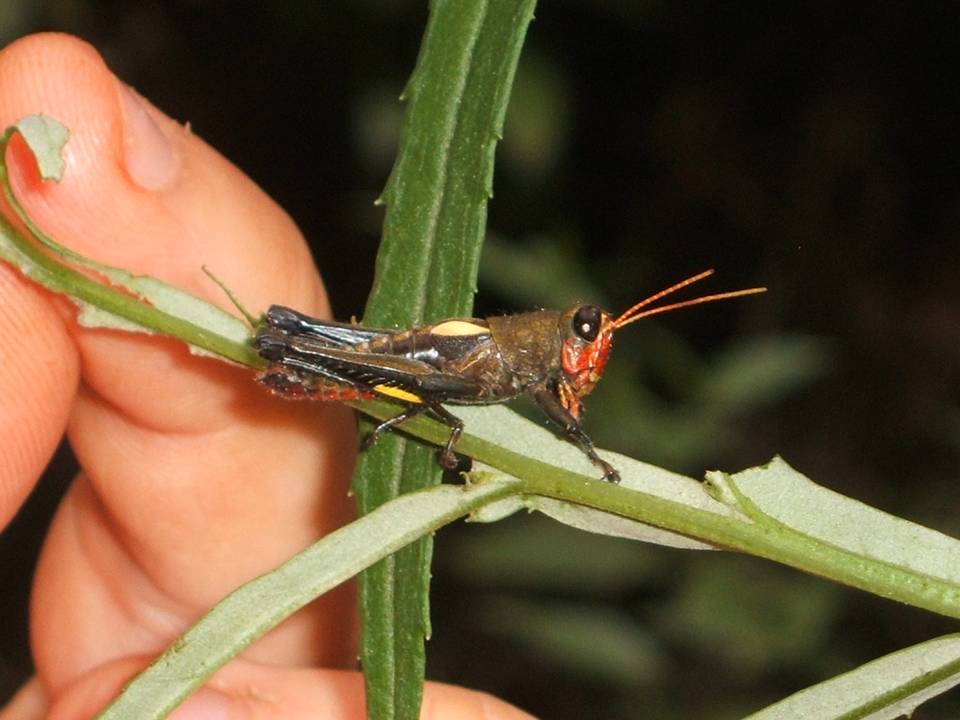
|
|
FIGURE 3c
|
|
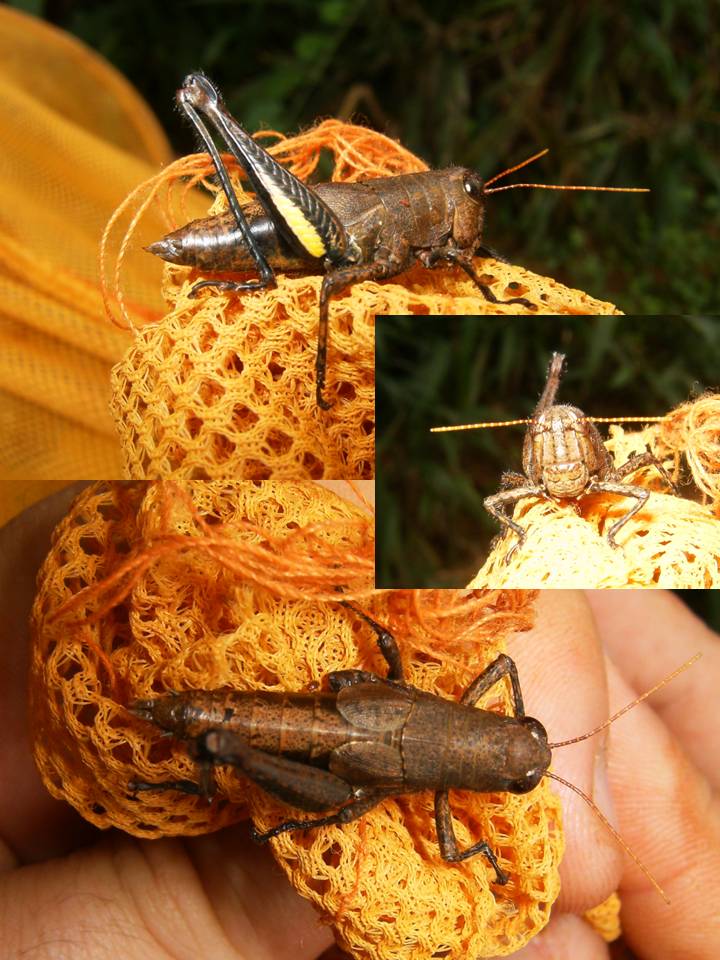
|
|
FIGURE 3d
|
|

|
|
FIGURE 3e
|
|
Gallery 3: Melanopliinae - Spur-throated Grasshoppers
FIGURE 3a - Dichroplus sp. maybe (cf elongatus) - PROCOSARA, PN San Rafael (Ivan Saxby February 2008).
FIGURE 3b - Eurotettix schrottkyi male - PROCOSARA, PN San Rafael (Moriz Stiefel April 2008).
FIGURE 3c - Eurotettix schrottkyi male - PROCOSARA, PN San Rafael (Jeni Oborn May 2008).
FIGURE 3d - Eurotettix schrottkyi female - PROCOSARA, PN San Rafael (Moriz Stiefel May 2008).
FIGURE 3e - Unidentified sp. - PROCOSARA, PN San Rafael (Jeni Oborn April 2008).
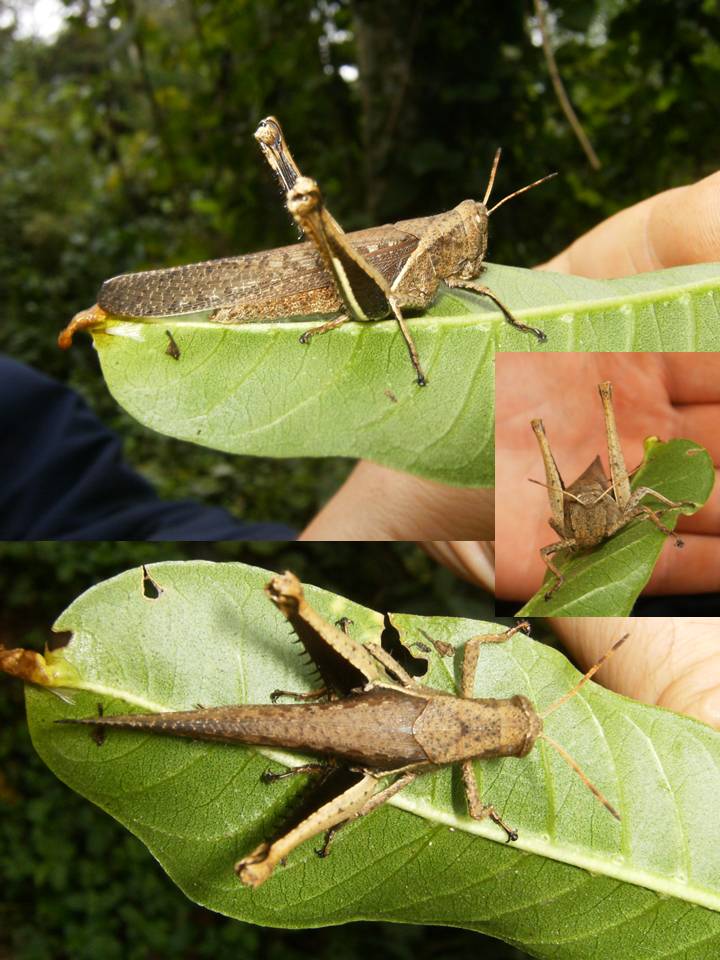
|
|
FIGURE 4a
|
|
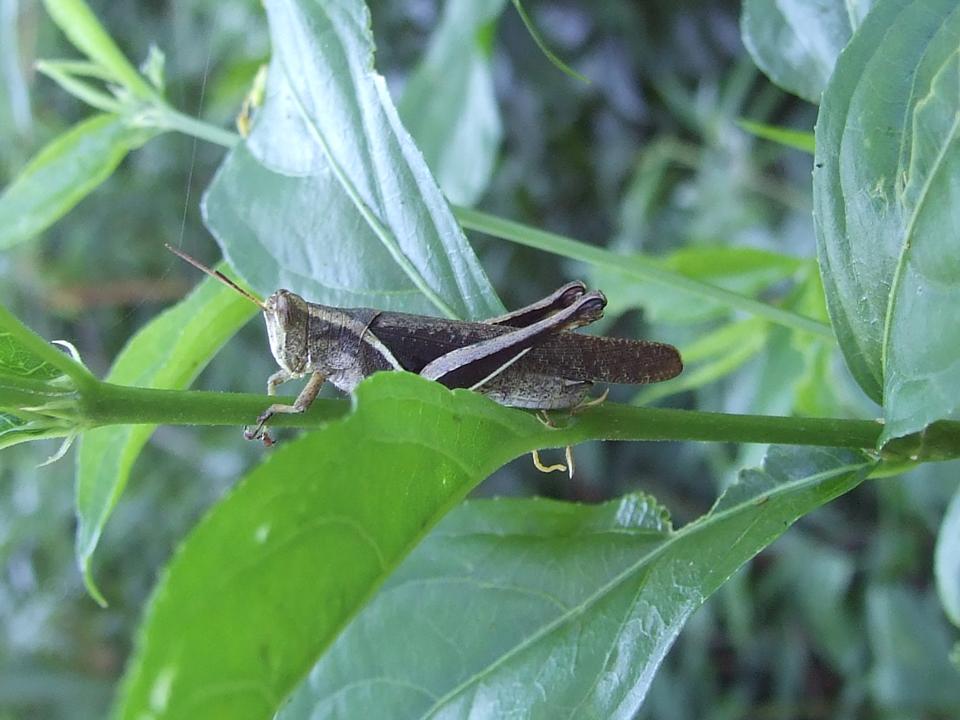
|
|
FIGURE 4b
|
|
Gallery 4: Ommatolampinae
FIGURE 4a - Abracris flavolineata - PROCOSARA, PN San Rafael (Moriz Stiefel May 2008).
FIGURE 4b - Abracris flavolineata - PROCOSARA, PN San Rafael (Alberto Esquivel November 2007).


